Submitted by WA Contents
eVolo announces 2017 winners for innovative skyscrapers
United States Architecture News - Apr 11, 2017 - 13:38 18012 views
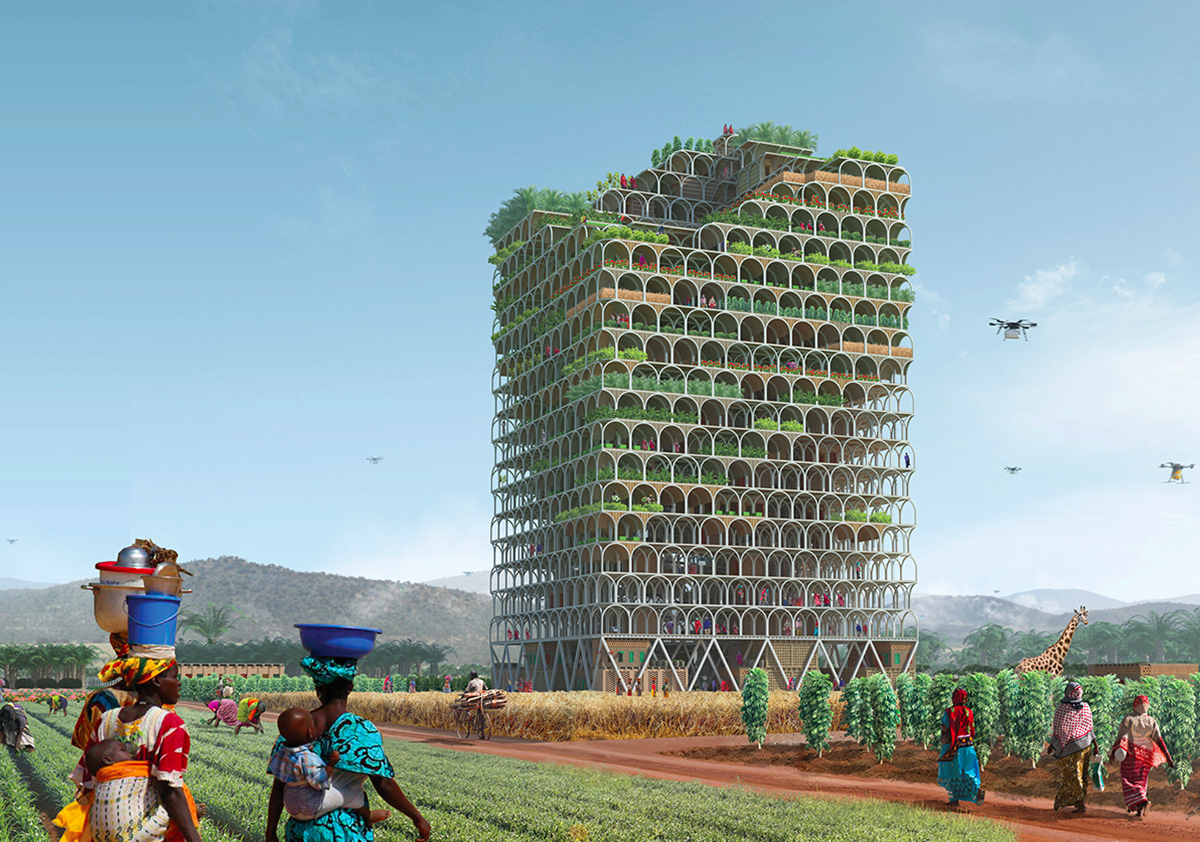
eVolo Magazine, an architecture and design journal focused on technological advances, sustainability, and innovative design for the 21st Century, has announced its 2017 winners for Skyscraper Competition and the winners selected from Poland, US and Spain.
The Jury selected 3 winners and 22 honorable mentions from 444 projects received. Established in 2006, the award recognizes visionary ideas for building high-projects that through the novel novel use of technology, materials, programs, aesthetics, and spatial organizations, challenge the way we understand vertical architecture and its relationship with the natural and built environments.
The first prize went to Pawel Lipinski and Mateusz Frankowski from Poland for the project Mashambas Skyscraper. The design proposes a modular and scalable skyscraper conceived as an educational center and marketplace for new agricultural communities in sub-Saharan Africa. The design seeks to increase farming opportunities and reduce hunger in these regions.
Vertical Factories in Megacities designed by Tianshu Liu and Lingshen Xie from the United States received the second prize. The design investigates the benefits of moving factories back to megacities. The proposal calls for a series of alternating architectural layers- factories and recreational areas stacked together to create a vertical structure. Each recreational layer would feed from the waste and resources of these factories.
The third prize went to Javier López-Menchero Ortiz de Salazar from Spain for the project Espiral3500. The project introduces the streets and complexity of the city’s horizontal plane into a spiraling vertical structure.
eVolo Magazine also selected 22 honorable mentions including skyscrapers inside giant sequoias, villages embedded and hanging from mountains, automated plug-in cities, iceberg skyscrapers that reverse global warming, and wind harvesting structures among other fascinating projects.
The international jury panel composed of Eric Bunge-principal nArchitects, Manuelle Gautrand-principal Manuelle Gautrand Architecture, Ferda Kolatan-founding director su11, Andrea Morgante-principal Shiro Studio, Marcos Novak-professor and director at transLAB, Yitan Sun-winner 2016 Skyscraper Competition, Boštjan Vuga-principal Sadar+Vuga, and Jianshi Wu-winner 2016 Skyscraper Competition.
See the 3 winning designs with short project info below:
1st prize: Mashambas Skyscraper by Pawel Lipinski, Mateusz Frankowski, Poland
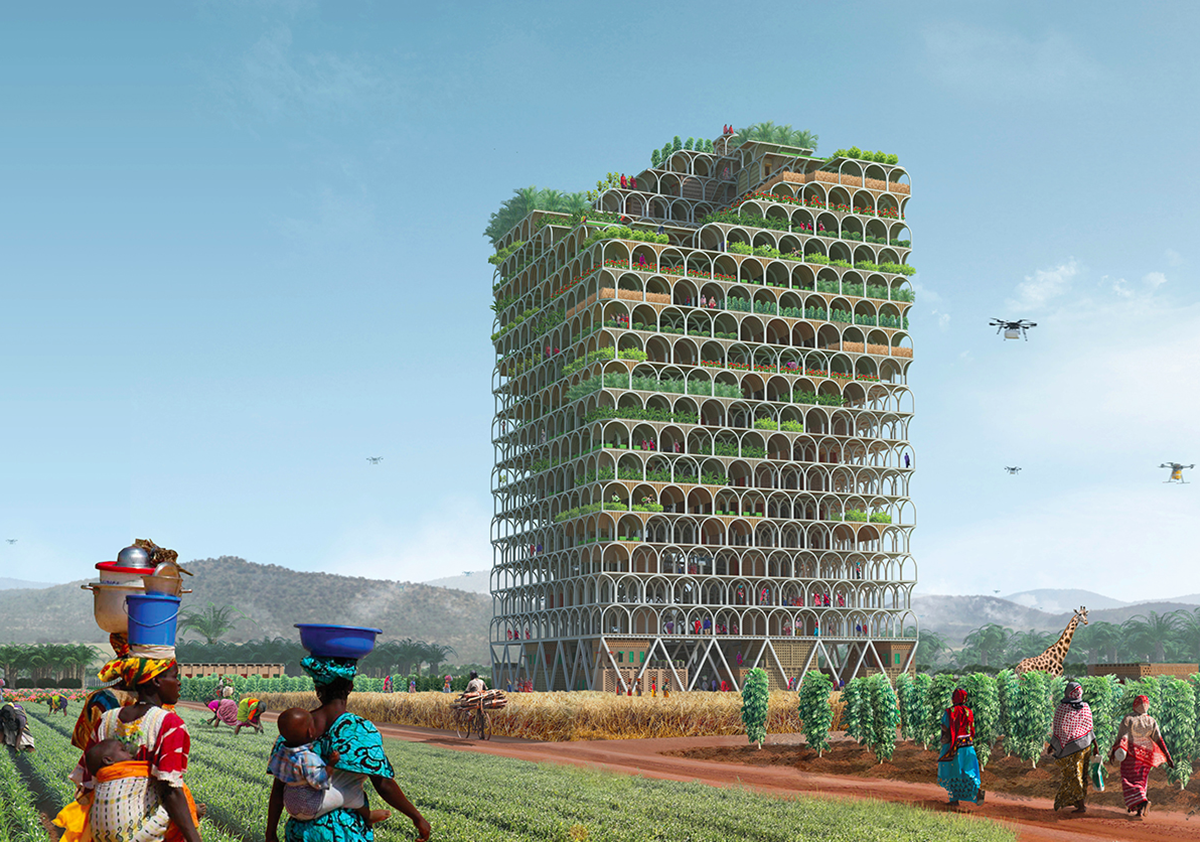
An area of cultivated ground; a plot of land, a small subsistence farm for growing crops and fruit-bearing trees, often including the dwelling of the farmer. Over the last 30 years, worldwide absolute poverty has fallen sharply (from about 40% to under 20%). But in African countries, the percentage has barely fallen. Still today, over 40% of people living in sub-Saharan Africa live in absolute poverty. More than half of them have something in common: they’re small farmers.
Despite several attempts, the green revolution’s mix of fertilizers, irrigation, and high-yield seeds—which more than doubled global grain production between 1960 and 2000—never blossomed in Africa, because of poor infrastructure, limited markets, weak goverments, and fratricidal civil wars that wracked the postcolonial continent.
The main objective of the project is to bring this green revolution to the poorest people. Giving training, fertilizer, and seeds to the small farmers can give them an opportunity to produce as much produce per acre as huge modern farms. When farmers improve their harvests, they pull themselves out of poverty. They also start producing surplus food for their neighbors. When farmers prosper, they eradicate poverty and hunger in their communities.

2nd prize: Vertical Factories in Megacities by Tianshu Liu, Lingshen Xie, United States
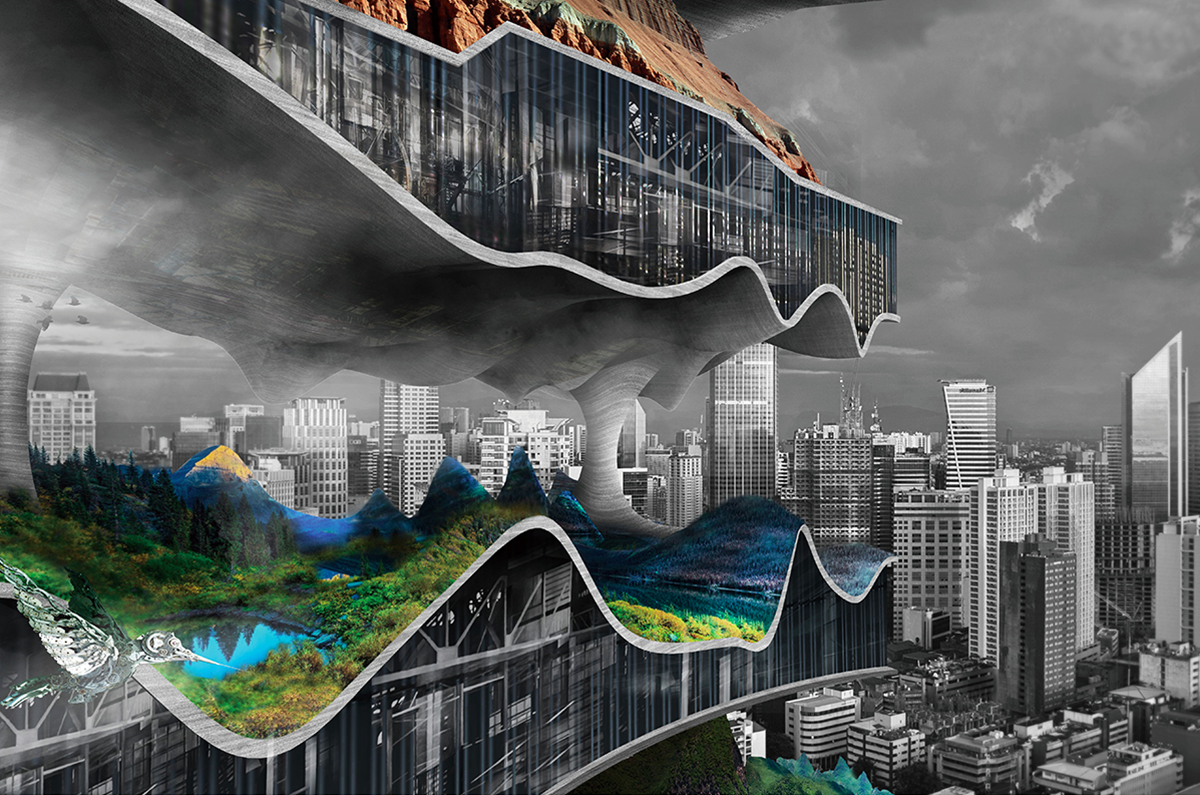
By 2025, the number of megacities, cities with a population over 10 million people, will grow from 23 to 36, and the population in the top 600 cities in the world will grow by 500 million. In the near future, two-thirds of the world’s population will live in these megacities.
Factories moved to areas outside cities because they were noisy and polluting. But now, many factories are cleaner and could have a new place in the urban environment. Moving them back into the city would provide a higher quality of life, by allowing employees to walk to work rather than commute in cars. Urban factories would be closer to populations of skilled workers, suppliers and technical and research centers.
This is the vision we have for the cities of tomorrow: factories will be dissolved into small pieces and then be stacked together into high-rise vertical factories. By bringing factories back to the city, we can achieve zero CO2 emissions, be energy efficient, and provide higher quality of life to the inhabitants.

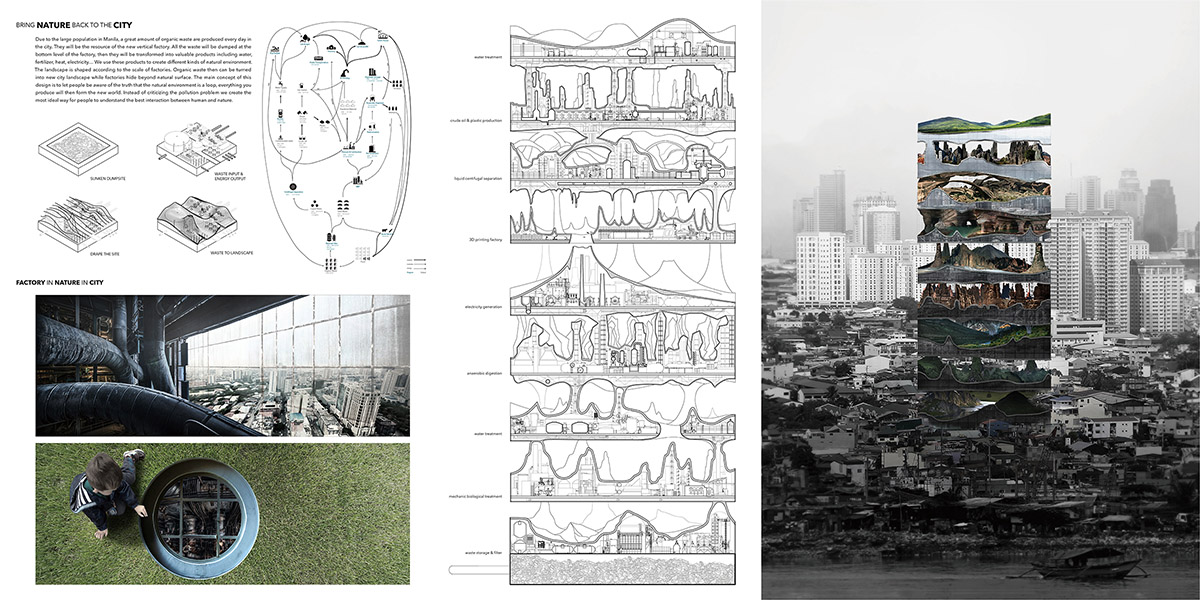
3rd prize: Espiral 3500 by Javier López-Menchero Ortiz de Salazar, Spain
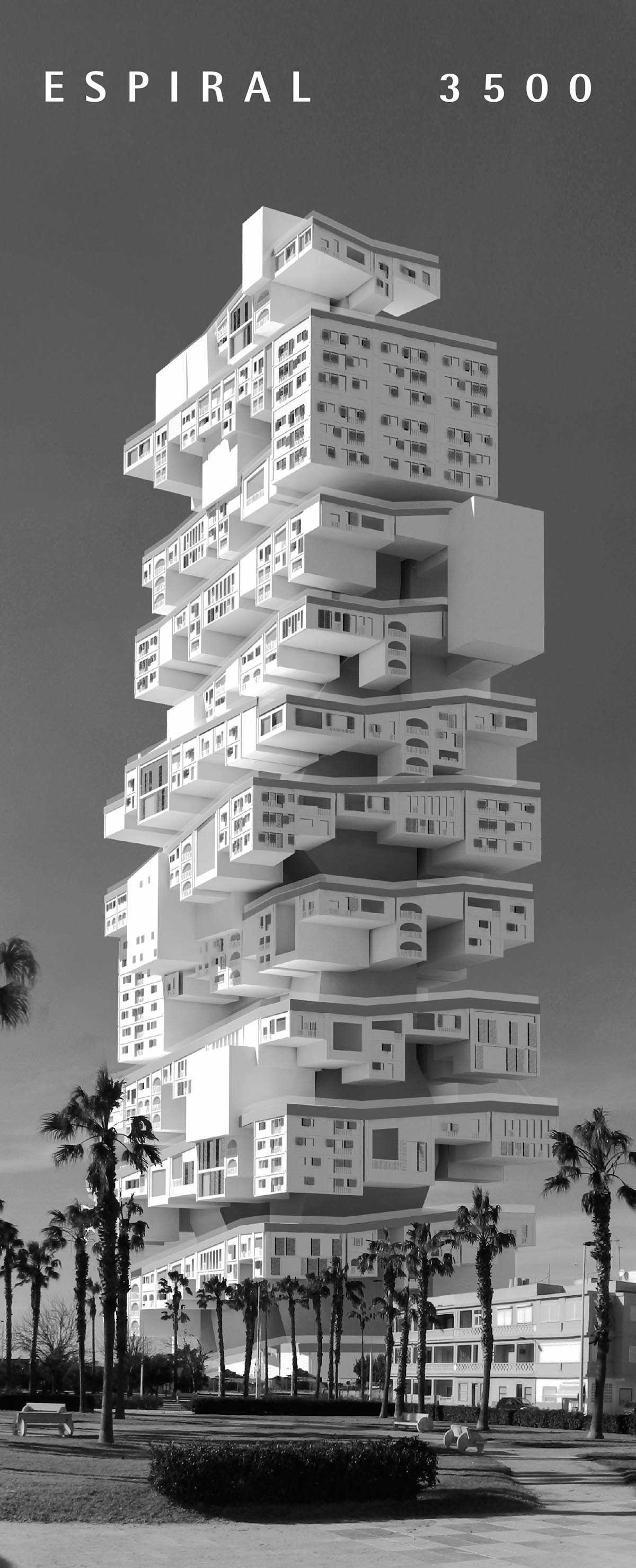
The eastern coast of Spain, containing the most highly populated seafront areas in the country, has suffered an indiscriminate urban expansion. Criteria for construction have erred on the speculative side rather than being the rational consequence of studying the urban needs of the territory.
Espiral3500 is situated in “La Albufera”, an agricultural natural park which has been subjected to speculation based development and expansive growth. Tourism has become the main force of attraction. With it, it has produced an urban sprawl, which has disfigured the landscape. Tourism in the area causes an increase in population density of up to 1000% in some localities, turning them from ghost towns in winter to areas of high most density in summer.
Would a more coherent model have been possible in “La Albufera” given knowledge of its operation?
A model that advocates management of the territory and its demands over selling its most precious good, the land; this is where the typology of the skyscraper becomes relevant as a figure that can absorb most of the anxieties and demands of the population. This element would be capable of seeing to the touristic needs without greatly affecting the natural resources of the territory. The gaps produced by the cyclical nature of tourism in the vertical construction could result in additional maintenance costs. However, the gaps experienced during winter in territories of the extensive model leave a far more devastating scenery behind, producing a total disassembly of most services and urban functions due to reduction of their density.
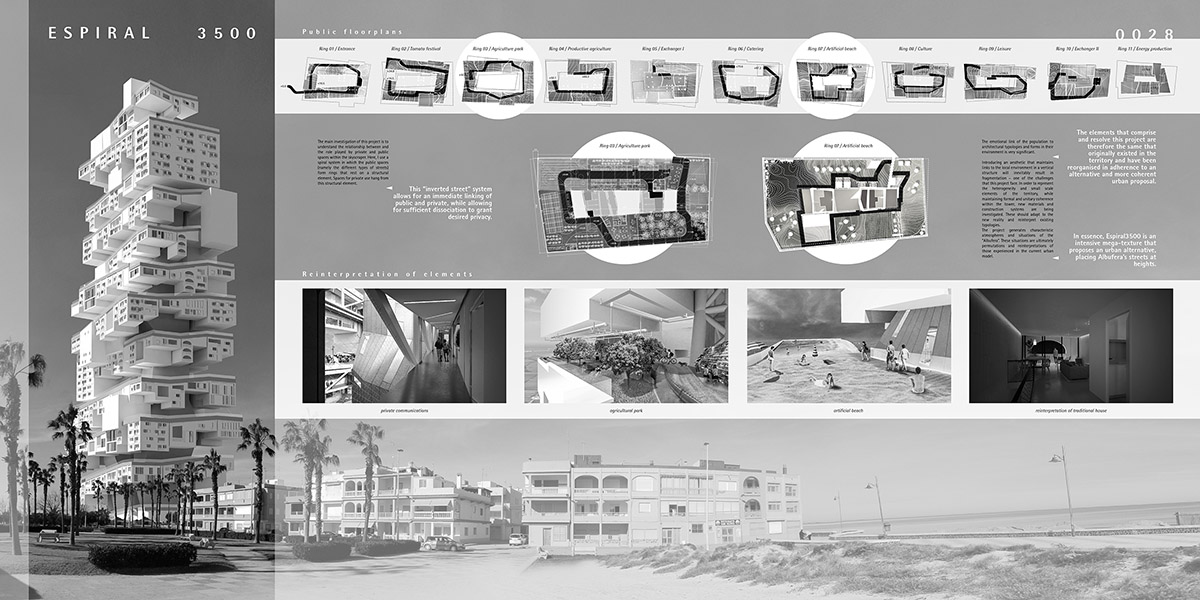
See all 22 Honorable Mentions here -eVolo also features projects in limited-edition book. Buy eVolo Skyscrapers 3 book here.
All images courtesy of eVolo
> via eVolo